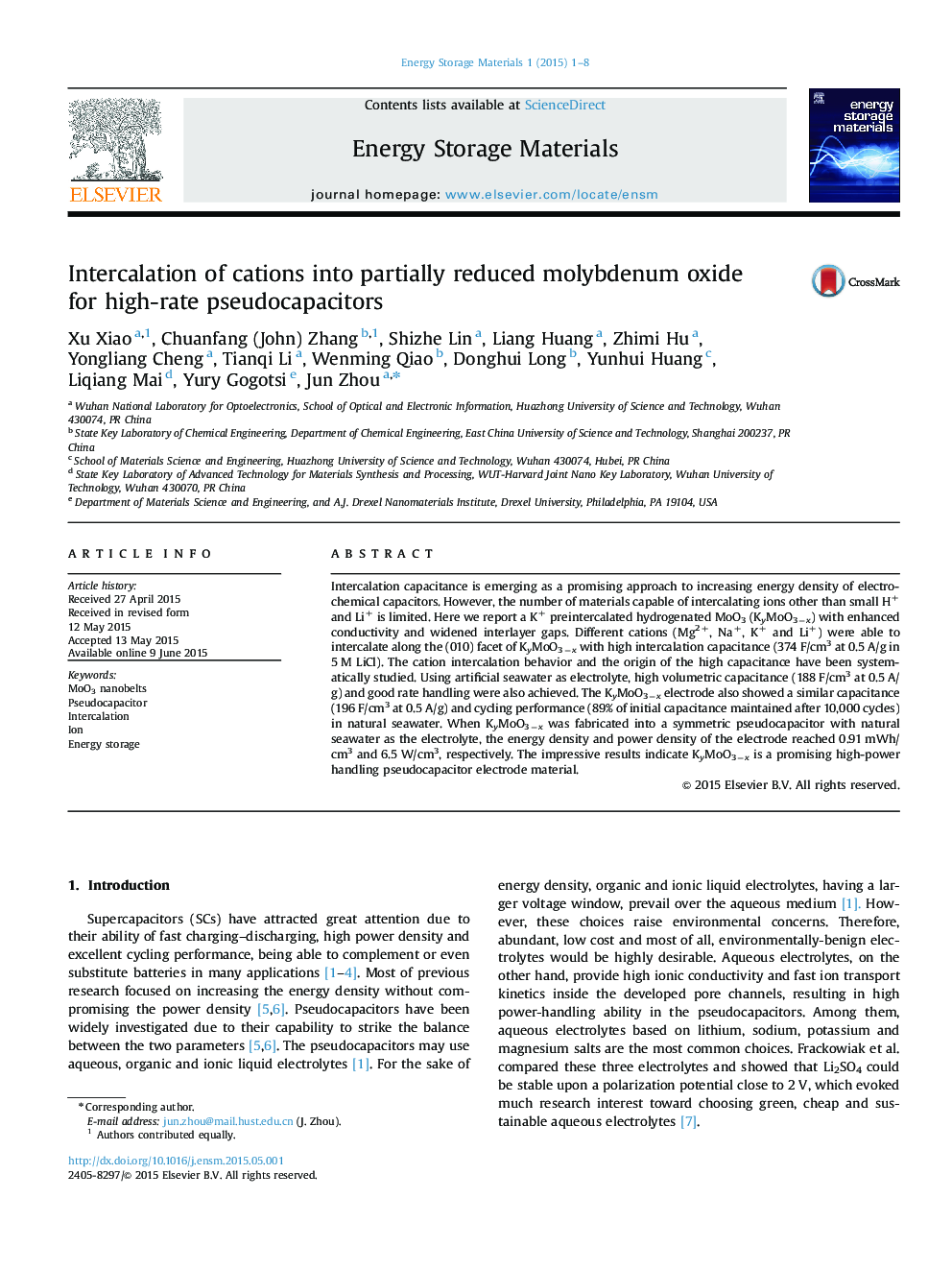| Article ID | Journal | Published Year | Pages | File Type |
|---|---|---|---|---|
| 1564609 | Energy Storage Materials | 2015 | 8 Pages |
•A MoO3 derivative (KyMoO3−x) with enhanced conductivity and larger interlayer spacing is fabricated.•Different cations are capable of intercalating KyMoO3−x.•KyMoO3−x achieves a high volumetric capacitance, rate performance and cyclability in seawater electrolyte.
Intercalation capacitance is emerging as a promising approach to increasing energy density of electrochemical capacitors. However, the number of materials capable of intercalating ions other than small H+ and Li+ is limited. Here we report a K+ preintercalated hydrogenated MoO3 (KyMoO3−x) with enhanced conductivity and widened interlayer gaps. Different cations (Mg2+, Na+, K+ and Li+) were able to intercalate along the (010) facet of KyMoO3−x with high intercalation capacitance (374 F/cm3 at 0.5 A/g in 5 M LiCl). The cation intercalation behavior and the origin of the high capacitance have been systematically studied. Using artificial seawater as electrolyte, high volumetric capacitance (188 F/cm3 at 0.5 A/g) and good rate handling were also achieved. The KyMoO3−x electrode also showed a similar capacitance (196 F/cm3 at 0.5 A/g) and cycling performance (89% of initial capacitance maintained after 10,000 cycles) in natural seawater. When KyMoO3−x was fabricated into a symmetric pseudocapacitor with natural seawater as the electrolyte, the energy density and power density of the electrode reached 0.91 mWh/cm3 and 6.5 W/cm3, respectively. The impressive results indicate KyMoO3−x is a promising high-power handling pseudocapacitor electrode material.
Graphical abstractFigure optionsDownload full-size imageDownload as PowerPoint slide
